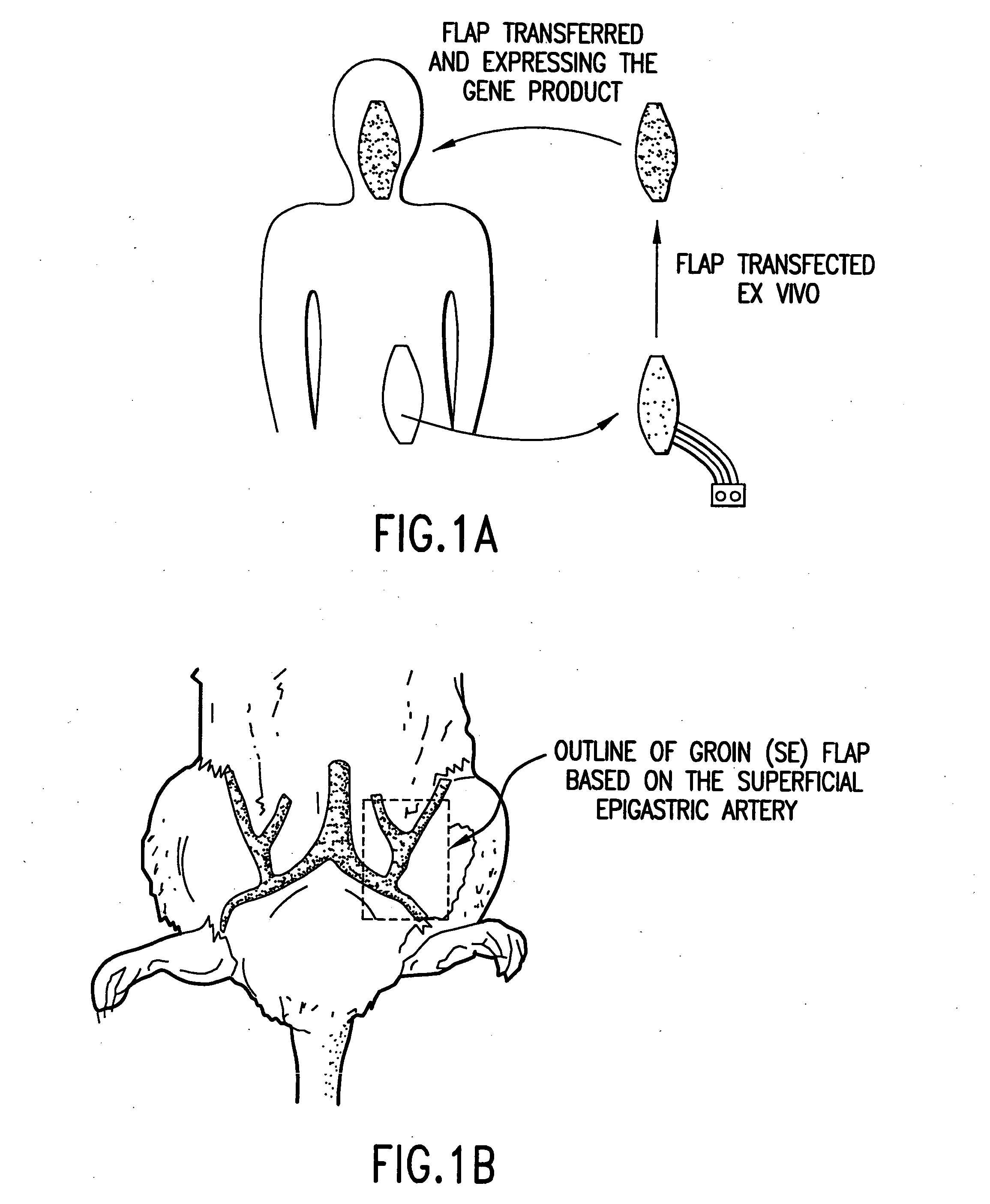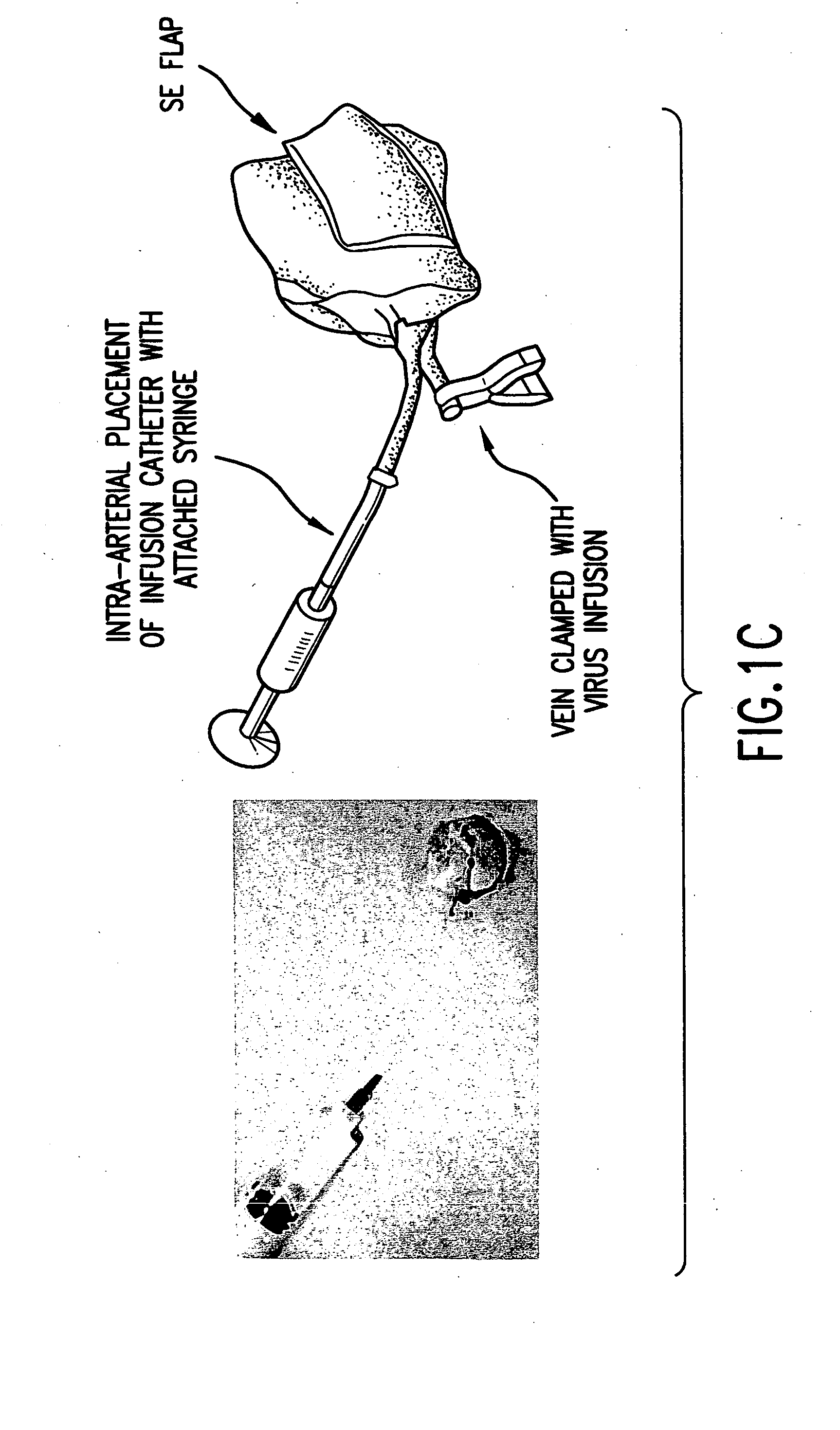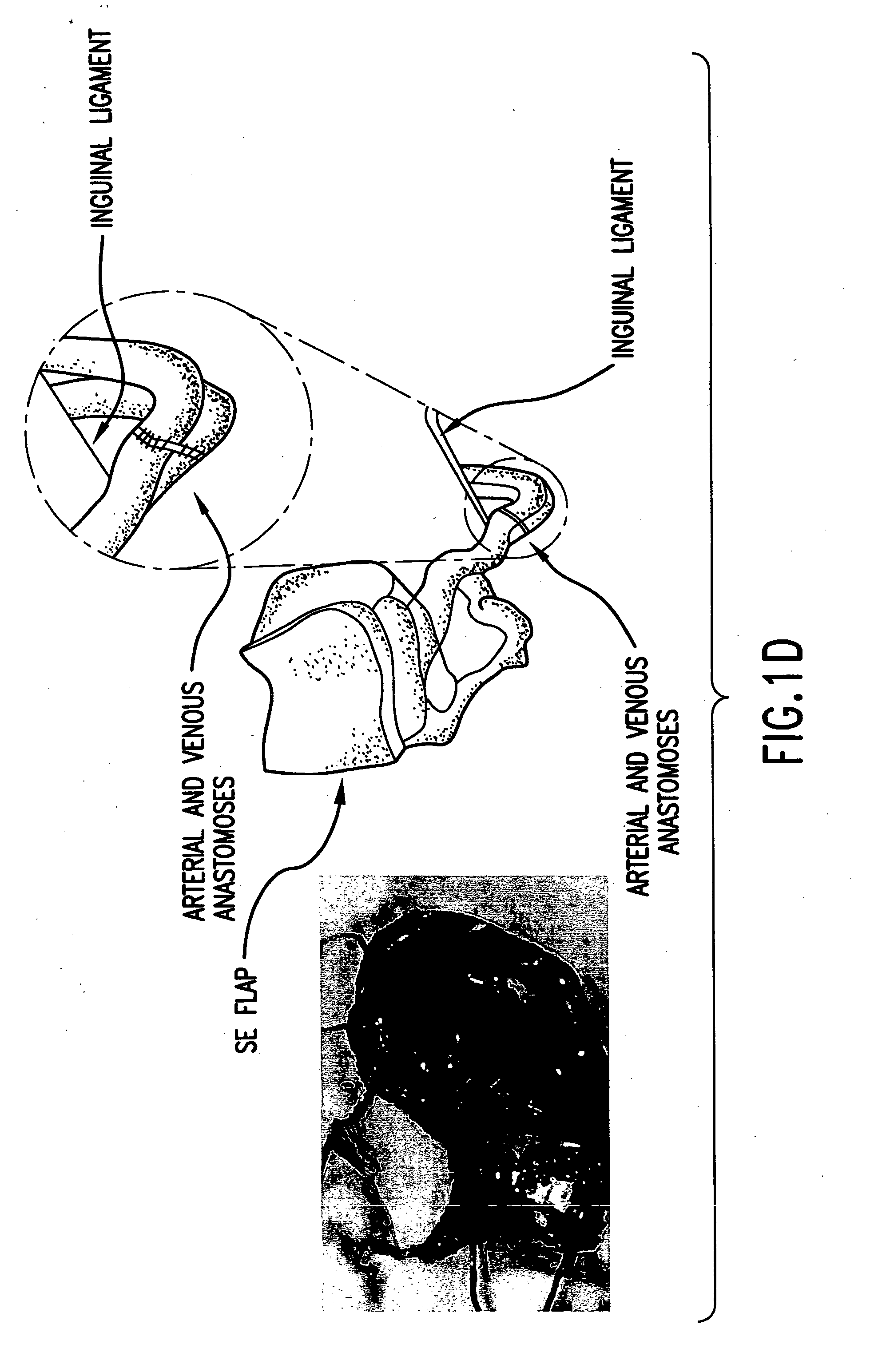Microvascular free flaps for local or systemic delivery
a microvascular and free flap technology, applied in the field of vertebrate tissue explantation, can solve the problems of limited availability of most donor organs, and achieve the effect of avoiding the immunologic complexity of xenotransplantation and minimal or no finctional loss
- Summary
- Abstract
- Description
- Claims
- Application Information
AI Technical Summary
Benefits of technology
Problems solved by technology
Method used
Image
Examples
example 1
6. EXAMPLE 1
Ex Vivo Transfection of Microvascular Free Flaps
[0191] 6.1. Introduction
[0192] Gene therapy using viral vectors holds great clinical promise but has been limited by difficulties in developing targeted, high-level gene expression with acceptable host toxicity.
[0193] The following example demonstrates a method of delivery of a nucleic acid encoding a product of interest that avoids many of the problems associated with viral transfection. Using a rat model, explanted microvascular free flaps were transfected ex vivo, flushed, and reattached to the native circulation using microvascular techniques. A nucleic acid encoding .beta.-galactosidase (.beta.-gal) as a reporter gene was used to demonstrate delivery of a product of interest according to the methods of the invention. Transfection was performed using an adenoviral vector containing the .beta.-galactosidase (.beta.-gal) reporter gene driven by the CMV promoter.
[0194] High regional expression of the .beta.-gal gene was se...
example 2
7. EXAMPLE 2
Transfection of Microvascular Free Flaps with a Nucleic Acid to Ameliorate the Effects Diabetes Mellitus
[0216] 7.1. Introduction
[0217] In this example, a rat superficial epigastric (SE) flap is genetically modified ex vivo with a nucleic acid encoding a therapeutic molecule of interest, i.e., the nucleic acid encoding proinsulin. The flap is re-implanted into the donor, where it functions as a neo-organ that delivers insulin following re-anastomosis.
[0218] The rat superficial epigastric flap is used as a model, principally because of its reproducibility and technical ease (Perry et al., 1984, Plast. and Recon. Surg. 74(3): 410-3). As will be understood by those skilled in the art, animal models (e.g., the mouse flap model (Cooley et al., 1998, Microsurgery 18(5): 320-3,), can be used to demonstrate the advantageous utility of the microvascular free flap method of the invention to deliver insulin systemically to an animal in need thereof The mouse model is advantageous be...
example 3
8. EXAMPLE 3
Transfection of Epigastric Free Flaps with IL-12
[0231] 8.1. Introduction
[0232] In this example, a rat tumor model is used to confirm that a genetically modified pigastric free flap can act as a delivery vehicle for localized gene therapy with emonstrable antitumor effect. A rat subcutaneous tumor model is employed and the rat istiocytoma cell line AK-5 is used as the tumor source (Nandakumar et al., 1997, Cytokines Cell. Mol. Ther. 3(4): 225-32). Prior studies have demonstrated that this tumor is exquisitely sensitive to local IL-12 therapy when delivered via injection. The methods exemplified herein may also be applied to a mouse flap model (Cooley et al., 1998, Microsurgery 18(5): 320-3). As will be understood by those skilled in the art, animal models (e.g., the mouse flap model), can be used to demonstrate the advantageous utility of the microvascular free flap of the invention to act as a delivery vehicle for localized gene therapy. The mouse model is advantageous b...
PUM
| Property | Measurement | Unit |
|---|---|---|
| Time | aaaaa | aaaaa |
| Time | aaaaa | aaaaa |
| Time | aaaaa | aaaaa |
Abstract
Description
Claims
Application Information
 Login to View More
Login to View More - R&D
- Intellectual Property
- Life Sciences
- Materials
- Tech Scout
- Unparalleled Data Quality
- Higher Quality Content
- 60% Fewer Hallucinations
Browse by: Latest US Patents, China's latest patents, Technical Efficacy Thesaurus, Application Domain, Technology Topic, Popular Technical Reports.
© 2025 PatSnap. All rights reserved.Legal|Privacy policy|Modern Slavery Act Transparency Statement|Sitemap|About US| Contact US: help@patsnap.com



